Exploring ION – Rome to Jordan Valley
We really didn’t know if we were going to be able to get out of camp. The night had been an endless series of light rain squalls, pattering on Howie’s roof. And we were two miles off the highway, at the side of one of the famous “gumbo” roads of the desert.
Gumbo is one of the terms applied to a special class of dirt which, when it is wet, becomes a mud with the consistency of axle grease mixed with snail slime, and just a dash of gorilla snot. When a dirt road turns to gumbo, any vehicle on that road turns into a hockey puck, uncontrollable by any means known to man. When you try to drive through gumbo, it flings itself onto every available surface and sticks like epoxy. Later, after it dries, it requires concrete jack-hammers to remove. Gumbo is more obnoxious and evil than shit itself – – it just doesn’t smell that bad.
But wait – – – I’m getting ahead of myself.
We left the Sheldon Wildlife Refuge and headed back out NV140, then north up US95. There was another possible route, up through Denio and Fields and then east on Whitehorse Ranch Road. But that route had 50 miles of unknown washboard dirt road, and Howie is not washboard-friendly (to say the least).
We were headed for the Owyhee River country, a huge tract of land in the southeast corner of Oregon. The word “owyhee” is the 19th-century spelling of “Hawaii”, and the river was named for two Hawaiian prospectors, intrepid, but unfortunate, who were lost in the region. In particular, we wanted to see the Three Forks area, but more about all that later on.
About 250 miles’ travel brought us to a place in between Rome and Jordan Valley, Oregon, called Antelope Reservoir. On the map, it had looked like a nice place to camp, and it would have been – – but for the facts that the Reservoir was nearly dry, and its campsites were full of hunters. It was time to improvise. We chatted with a hunter about the area, and he suggested another road on the far (east) side of the Reservoir, Antelope Canal Road. It was a good suggestion, and we found a nice flat spot not too far off the highway, up on a gentle rise. Once parked, we were astounded to find it also had some modest Internet!
It looks more bland than it was, for the desert is vast and quiet, and the camp was peaceful, serene.
It certainly wasn’t anything fancy, pretty nondescript in fact. But the photos don’t really do it justice. It was quiet, spacious, and empty. We were camped.
That night (Tuesday), as we went to bed, my foot settled into the carpet on my side of the bed – – – with a sodden squish. The carpet was soaking wet, never a good thing in any kind of home, let alone a motorhome. I did some basic investigating and troubleshooting (quite a comical picture I’m sure, in my birthday suit), but couldn’t establish what the problem might be. So that night, of course I tossed and turned, worrying about leaking tanks and plumbing – – while getting my feet sopping wet every time I got up to pee. Lovely and restful…. not.
Wednesday morning, I got up, worried but energized, and quickly dressed and started daylight troubleshooting of the problem. Many checks and tests and probings and musings later, the problem was revealed: our just-filled fresh-water tank had spilled out the filler port and gotten in between the layers of the side wall. Draining from there, it soaked the carpet on that side of the RV.
I put in some fixes, and we propped everything open to help dry the carpet. Then we took off for our main purpose – – exploring.
We headed into Jordan Valley, about 10 miles east, thinking we’d get some maps and info. Well, we did, sort of. But not what we were really looking for. We got a lot more information later on just by doing more Internet research.
Jordan Valley was once a much larger community. Sadly, the crash of gold prices some years back made the local mine unprofitable. When the mine closed, more than half the population was out of work, and the town shrank drastically. Today, there’s one gas station, a tiny grocery, an auto repair, hardware store, and cafe/lounge. Oh yeah, and a really nice little espresso shop at the edge of town. But even that small accounting is quite a bit for a population of only 175 souls.
So what we found was a quiet, laid-back town with some shuttered stores and some charming buildings, a cool little church, a tidy well-kept cemetery. There’s also a Pelota court, for playing Basque handball (a variation on Jai-Alai). In short, the town shrank gracefully, and it’s a pleasant place to visit.
If you are a placard-reader, here are a couple of informative information displays from near the handball court. Click them to expand, they should be just barely readable at full-screen size.
After exploring around town, having some coffee and (excellent) ice cream, we got into Ralph to head back to camp. Dang, another UH-OH! – – Ralph’s exhaust system was hanging WAY too low for a proper 4WD vehicle. The hanger bracket had succumbed to too much off-road vibration; it was broken clean through. That pipe belongs up about 1″ from the edge of the body.
There was a guy, Kelly, who worked at the auto/truck service shop, and he had the equipment and expertise to do the repair. But there was another truck in front of me, and it was almost Happy Hour. Rather than take the chance on my entire exhaust system breaking off, I gathered some spare steel wire from my parts kit, and did an ugly but serviceable job of wiring the pipe back up. It might last for a while. Hopefully, long enough to get back to camp, and then back to town again the next day. Hey, give me a break, it was an emergency. Not my usual workmanship. Really.
Last check for the day: rain forecast. We did NOT want to get caught out on a dirt road after a downpour, because these are Gumbo roads. Good news, the 20% forecast had dropped to zero. It was not going to rain that night. Famous last words.
We got to camp under what appeared to be clearing skies, and had a great evening walk down to a cattle trough about a mile away. They make these things by sawing in half giant tires from mining earth-movers. The beasts are 10 feet across, waterproof, bulletproof, weatherproof, and cattle-proof. Really clever idea.
Later in the evening, a few sprinkles tap-tapped on Howie’s roof. And kept on tapping. In fact, the damn tapping kept up pretty much all night long. Each flurry of raindrops brought closer the prospect of being stuck in camp until the gumbo roads dried out. Another un-restful night. Oh well.
Thursday morning dawned dull gray, with scattered light showers still falling. The road surface was dark and threatening – – but, happily, not quite muddy. We carefully drove Ralph out to the highway and into town for the repair. Kenny did a bang-up job, and we were good to go.
By that time, only a week+ on the road, we’d had a few more problems to deal with than we normally experience, but we were still winning. To celebrate our continuing success, you guessed it – – we went exploring.
Rome, OR, was about 20 miles west. Rome was named because the settlers saw some local geological formations and thought they looked a lot like the columns and pillars of the ancient city in Italy. So of course we had to go check out the Pillars of Rome. But first, we wanted to investigate the camp and launch near the tiny Rome township, where US95 crosses the Owyhee River.
At that time of year (October), the river is placid and slow. The camp was empty (weekday, nobody running the river, and all the locals out hunting). It would be a nice place to stop or stay, although it’s pretty close to the highway and could be noisy. The small group of trees in the distant center of the picture is where the ‘town’ is – – really just a gas station and store on the highway.
Looking south, upstream on the barely-moving Owyhee River.
We headed directly north, away from Rome and toward the Pillars. After a couple of miles, the formations loomed in the distance, flanked by golden farm fields, fences, and irrigation piping.
The largest part of the Pillars formation is actually on private land, and it’s posted as such. But it’s easy to see, and there are some other parts of the geology that are on public land and accessible by easy hike.
I must say, while the Pillars are pretty to look at, and genuinely striking and unique – – those settlers really had overactive imaginations. Try as I might, I really couldn’t get Roman columns out of anything. Very cool structures and gorgeous to behold, yup. But Roman, for me, not so much. Definitely worth seeing, and the four miles is easy, smooth graded dirt road.
After hiking around the formations, we headed back to Ralph, and while walking through some brush, I nearly stepped on this jackrabbit, which jumped about eight feet out in front of me. That’s about the same distance that I jumped straight up. I’m not sure who was more scared. At least the jackrabbit doesn’t have any pants to crap in.
Rather than return on US95, we decided to take “Old ION Highway”, a clearly marked heavy-dotted-red line on our map. Such notations typically indicate a graded dirt road with 30mph speed capability. This road had NEVER been graded, and 3mph was too fast in many parts. We covered 10 miles in about 90 minutes. (This is the road, north of US95, which goes through Arock and the old Charbonneau gravesite.)
We spent a little bit of time coaxing these cattle away from the (one of many) gates along the way. The road covered a mix of private and BLM land, with cattle-control fences and gates at random intervals.
Most of the gates were typical two-wire-loop affairs, but this one was flat weird. It had a heavy hardware-cloth overlay, and a strange stick-chain-rope lockup mechanism. At first sight, it looked locked, and we thought (gag) that we’d have to drive BACK those 90 miserable minutes of rocky road. But Karin figured out how to unlock and lock it, and on we went.
The whole area is vast, spread-out, beautiful grassy desert, with charming little ranch houses spotted here and there.
Some of them have gorgeous views – – – what a fabulous place to come home to.
We stopped at the gravesite of one of history’s famous persons. This fellow was the son of Sacagawea, the Indian gal that went on the Lewis and Clark expedition. His life in itself was quite a story, and the memorial is a small tribute to a fine person.
Back at camp again, we took our usual evening walk through the desert, this time along a shallow arroyo drainage. In one area, the creek bank was riddled with giant burrow entrances. These looked downright scary, big enough for something close to dangerous to hide in. Later, we looked up the burrow in one of our favorite paper books, “Desert Holes” – – – it’s a badger burrow. They make lots of them, and live semi-nomadically within their home range, moving from burrow to burrow as it suits them.
Tomorrow, we’re headed over to Silver City, a suggestion from the local hardware store owner. It’s buried way back in the hills to the east of town (in Idaho), and has a storied past. Should be fun.
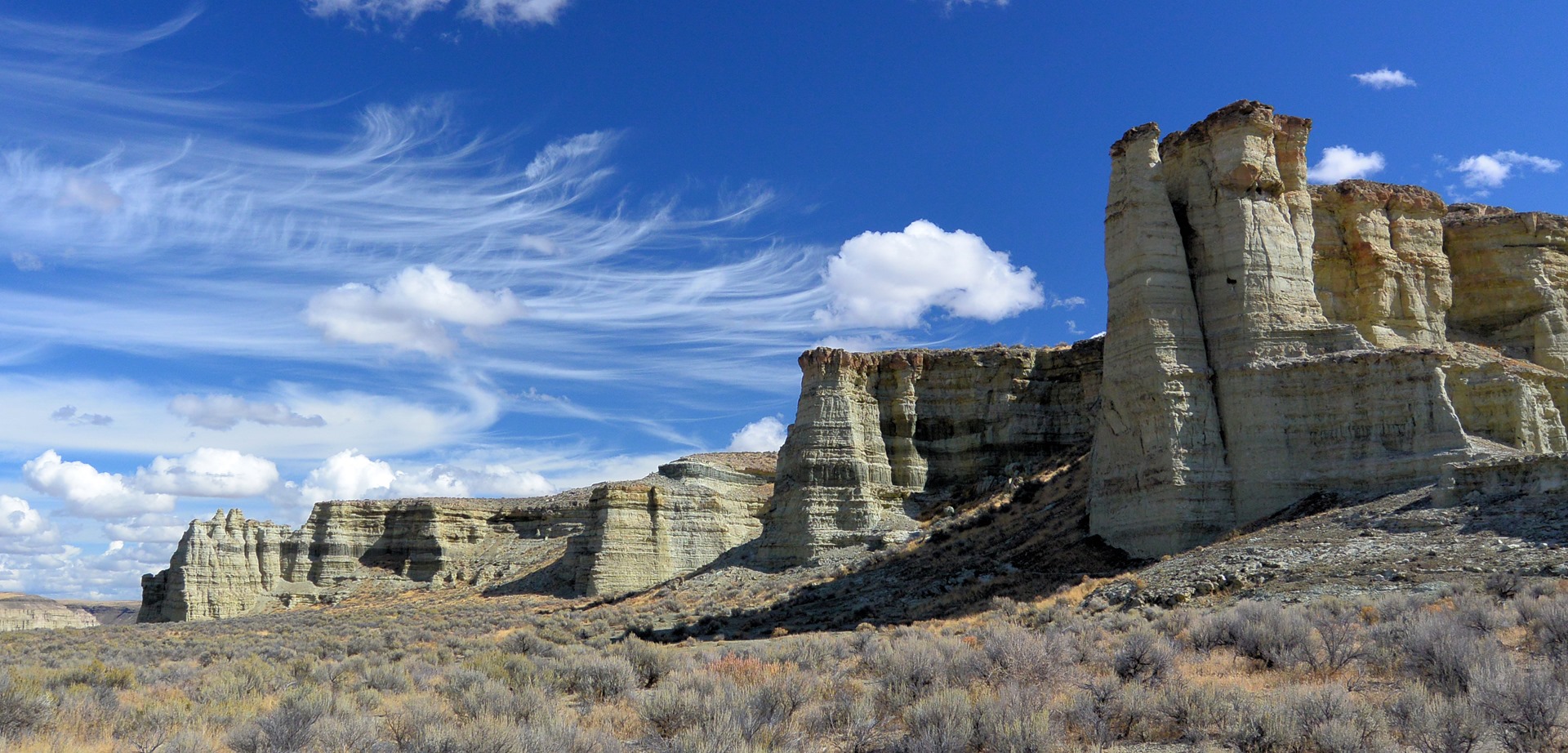
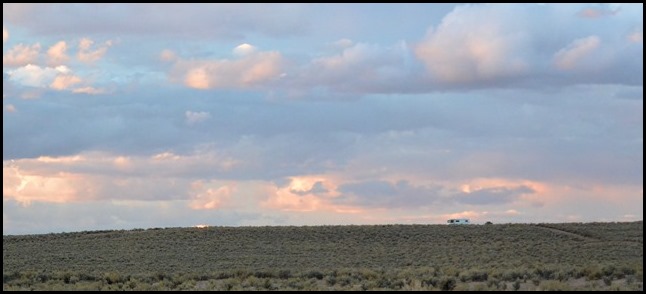
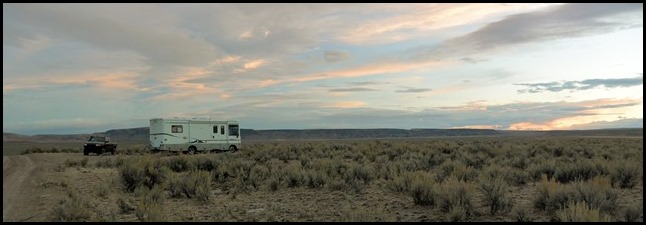
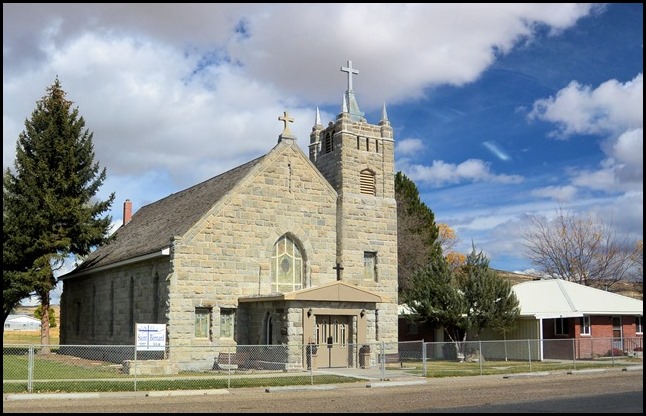
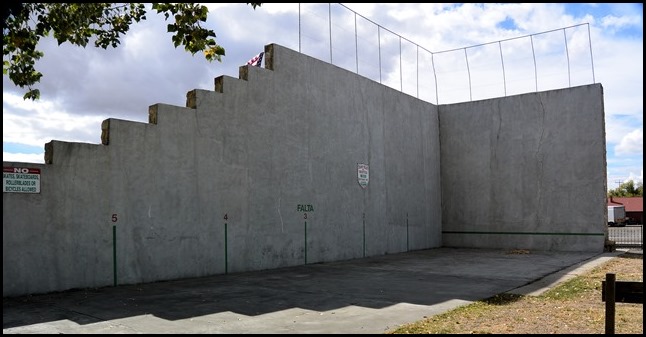
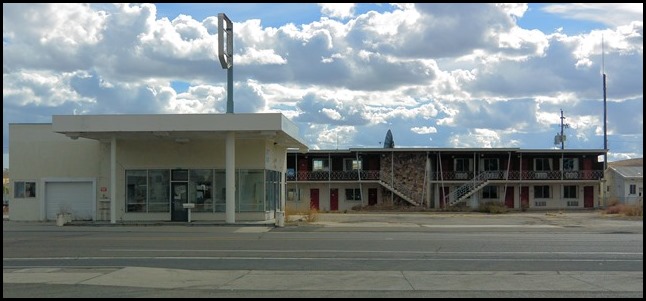
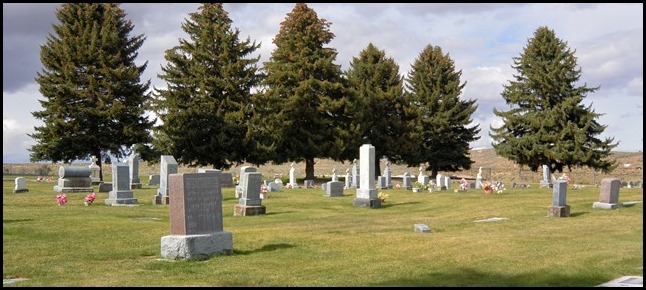
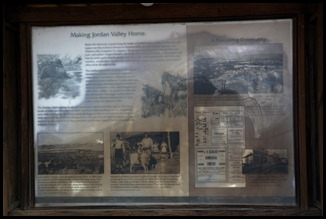
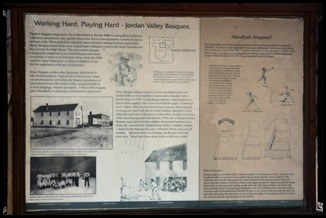
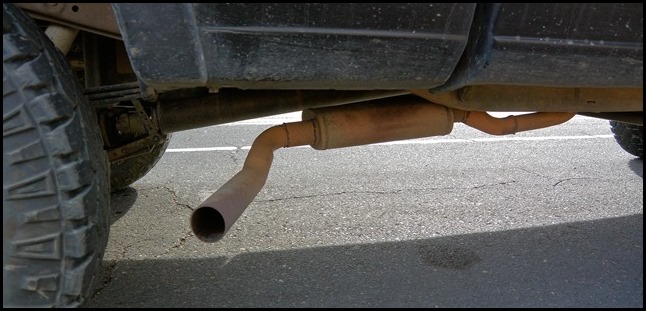
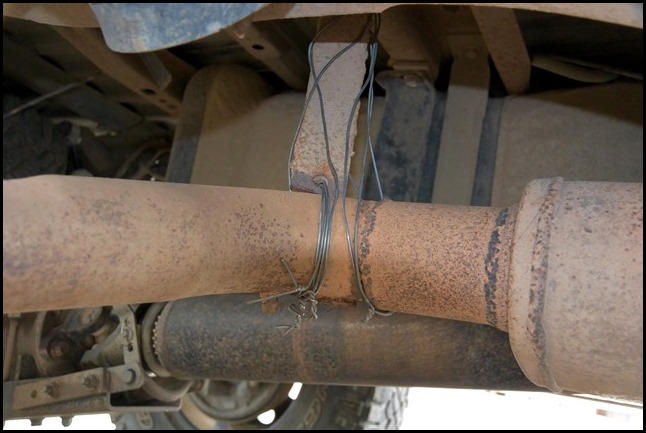
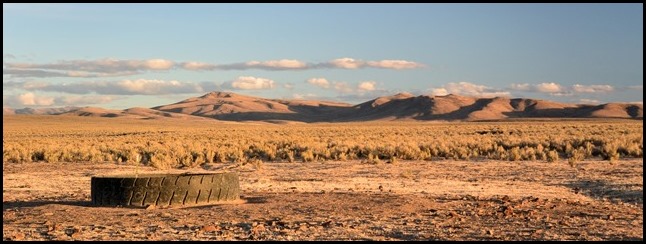
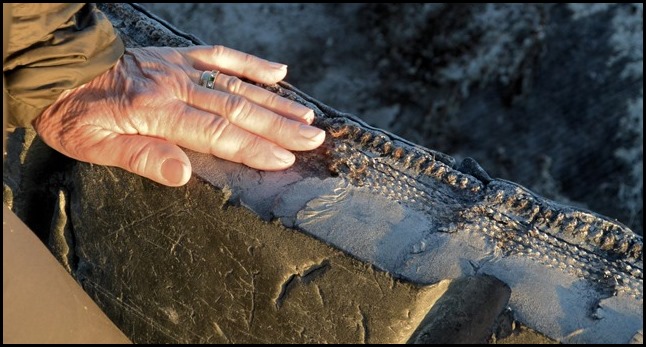
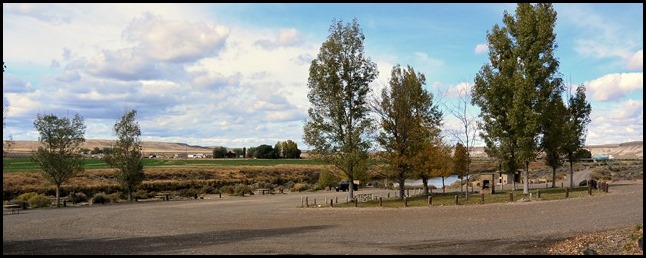
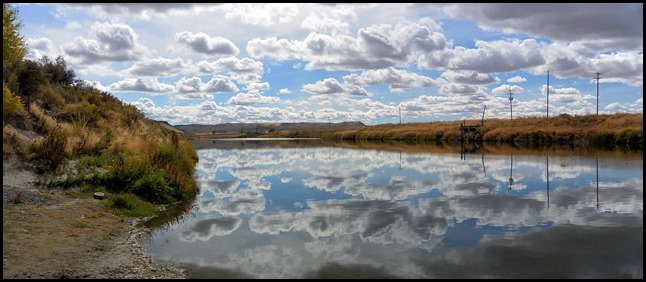
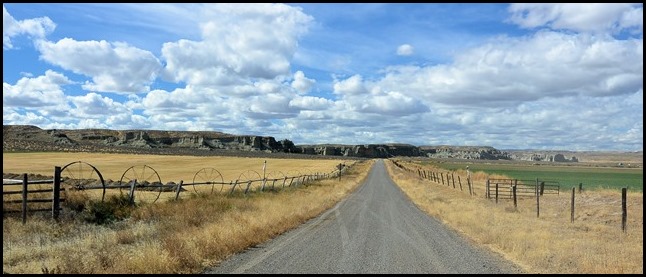
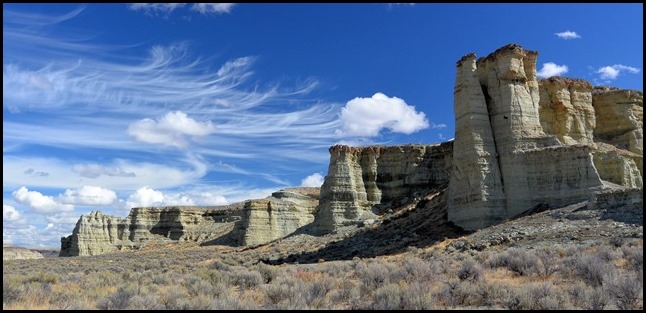
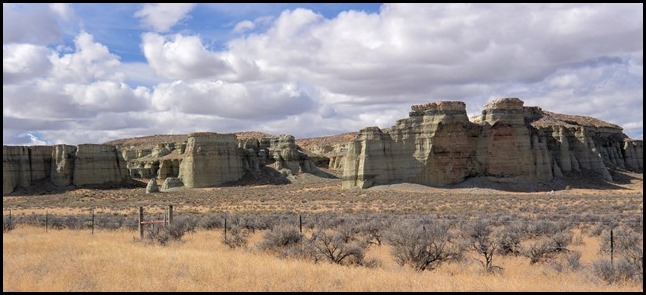
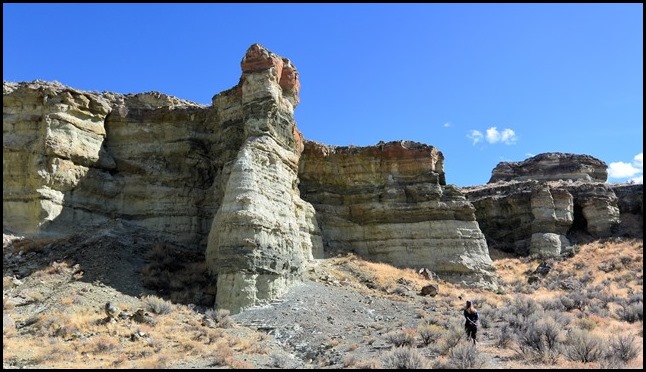
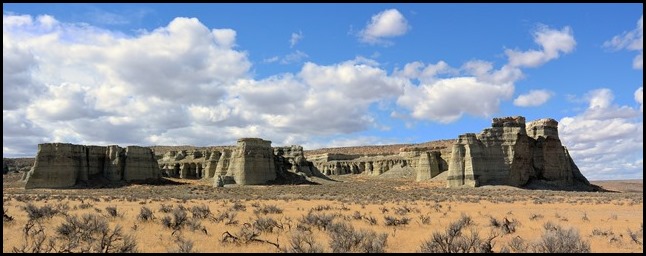
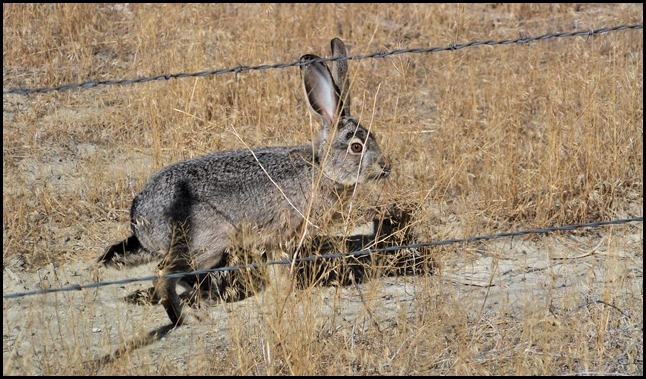
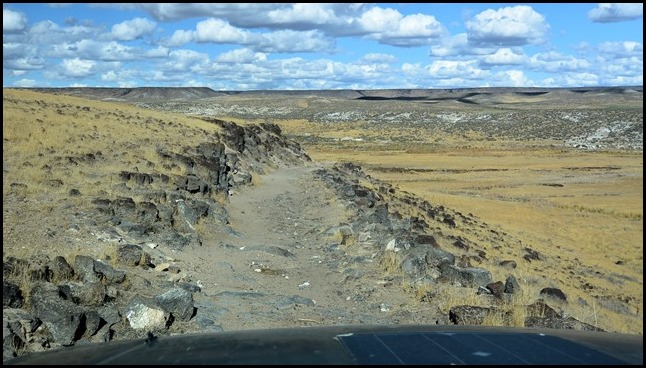
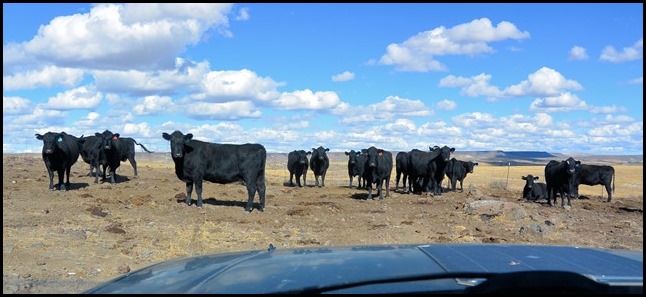
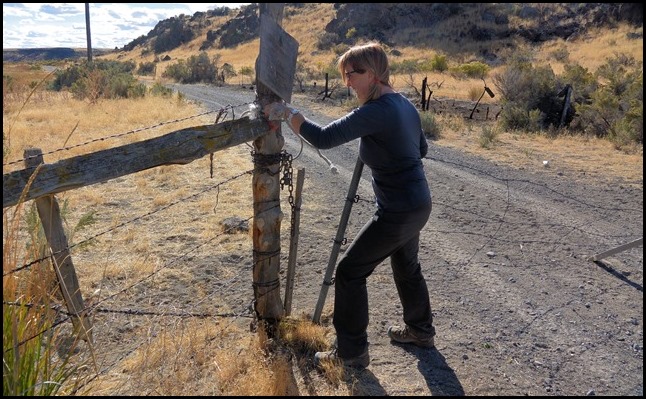
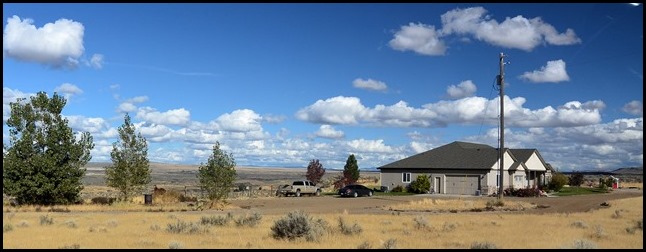
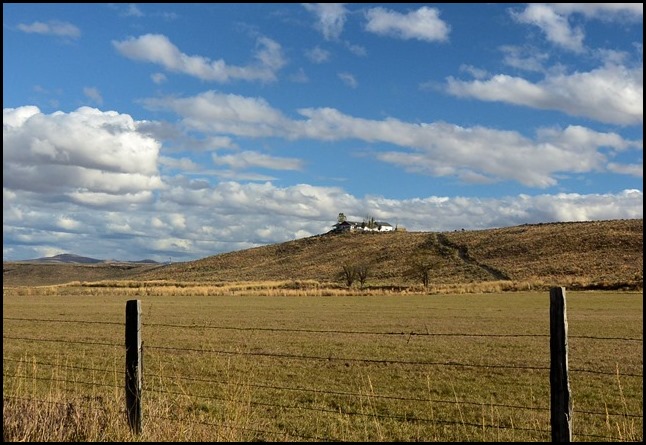
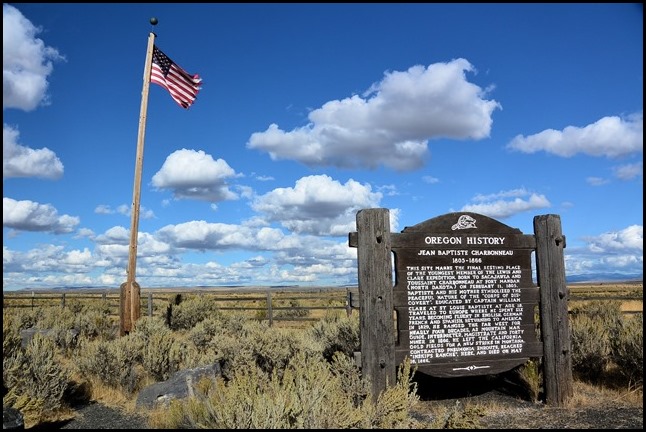
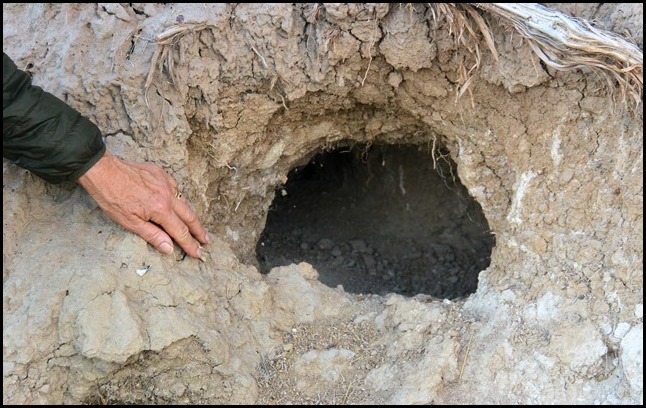
Pictures are beautiful. Loved the writing too.
Nice, Greg. Glad to see you’re still an explorer. What kind of camera do you use?
Most shots are with a Nikon V2 and 10-100 zoom. That’s a 27-270 equivalent. But my newest toy is my 70-300. It’s fantastic, 810mm equivalent and sharp as a tack with lightning auto focus. Also my cell phone occasionally, and a little Fuji waterproof 3x zoom (for kayaking ).